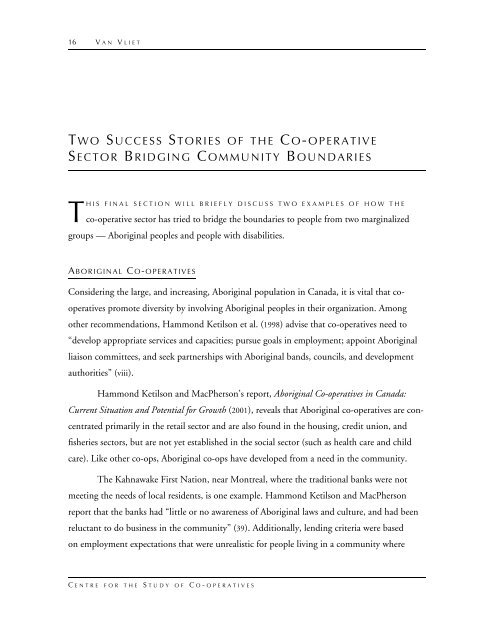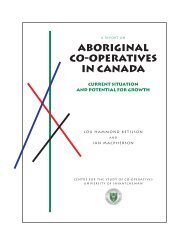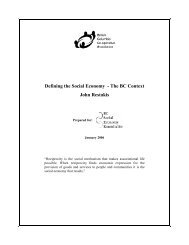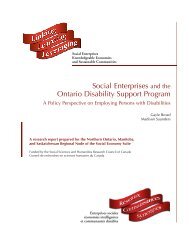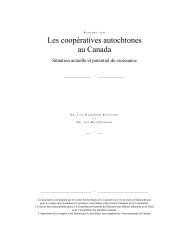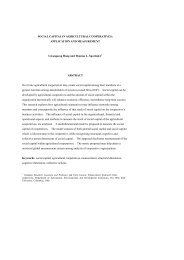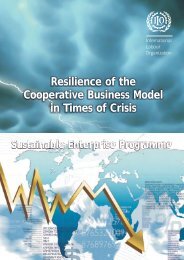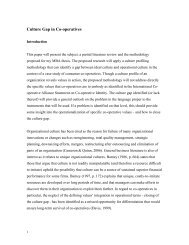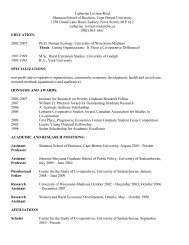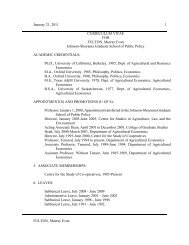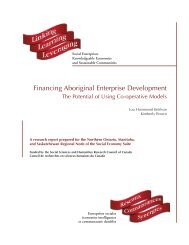Network Diversity - Centre for the Study of Co-operatives
Network Diversity - Centre for the Study of Co-operatives
Network Diversity - Centre for the Study of Co-operatives
Create successful ePaper yourself
Turn your PDF publications into a flip-book with our unique Google optimized e-Paper software.
16 V A N V L I E T<br />
T W O S U C C E S S S T O R I E S O F T H E C O- O P E R A T I V E<br />
S E C T O R B R I D G I N G CO M M U N I T Y B O U N D A R I E S<br />
THIS FINAL SECTION W I L L B R I E F L Y D I S C U S S T W O E X A M P L E S O F H O W T H E<br />
co-operative sector has tried to bridge <strong>the</strong> boundaries to people from two marginalized<br />
groups — Aboriginal peoples and people with disabilities.<br />
AB O R I G I N A L C O-O P E R A T I V E S<br />
<strong>Co</strong>nsidering <strong>the</strong> large, and increasing, Aboriginal population in Canada, it is vital that co<strong>operatives</strong><br />
promote diversity by involving Aboriginal peoples in <strong>the</strong>ir organization. Among<br />
o<strong>the</strong>r recommendations, Hammond Ketilson et al. (1998) advise that co-<strong>operatives</strong> need to<br />
“develop appropriate services and capacities; pursue goals in employment; appoint Aboriginal<br />
liaison committees, and seek partnerships with Aboriginal bands, councils, and development<br />
authorities” (viii).<br />
Hammond Ketilson and MacPherson’s report, Aboriginal <strong>Co</strong>-<strong>operatives</strong> in Canada:<br />
Current Situation and Potential <strong>for</strong> Growth (2001), reveals that Aboriginal co-<strong>operatives</strong> are concentrated<br />
primarily in <strong>the</strong> retail sector and are also found in <strong>the</strong> housing, credit union, and<br />
fisheries sectors, but are not yet established in <strong>the</strong> social sector (such as health care and child<br />
care). Like o<strong>the</strong>r co-ops, Aboriginal co-ops have developed from a need in <strong>the</strong> community.<br />
The Kahnawake First Nation, near Montreal, where <strong>the</strong> traditional banks were not<br />
meeting <strong>the</strong> needs <strong>of</strong> local residents, is one example. Hammond Ketilson and MacPherson<br />
report that <strong>the</strong> banks had “little or no awareness <strong>of</strong> Aboriginal laws and culture, and had been<br />
reluctant to do business in <strong>the</strong> community” (39). Additionally, lending criteria were based<br />
on employment expectations that were unrealistic <strong>for</strong> people living in a community where<br />
C E N T R E F O R T H E S T U D Y O F C O - O P E R A T I V E S


